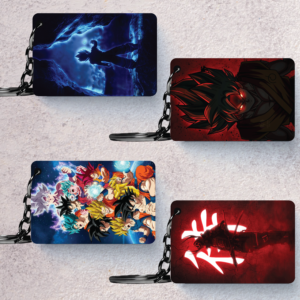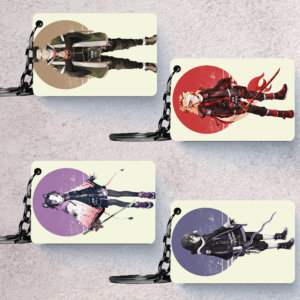Introduction
Post-wedding celebrations, often seen as an extension of the wedding festivities, offer newlyweds and their loved ones a chance to continue the joyous occasion in a more relaxed and informal setting. These gatherings, ranging from brunches and barbecues to destination get-togethers and after-parties, serve as an opportunity for the couple to express gratitude to their guests, reflect on their special day, and create additional memories in a less structured environment. Implementing best practices for these events ensures that they are both enjoyable and memorable for everyone involved. From meticulous planning and thoughtful guest lists to personalized touches and seamless coordination, these practices can transform post-wedding celebrations into meaningful extensions of the wedding, allowing the happiness and love of the wedding day to linger a little longer. By considering factors such as the couple’s preferences, guest comfort, and logistical details, couples can craft post-wedding events that encapsulate their unique style and continue to spread the joy of their union.
Understanding Post-Wedding Celebrations
Post-wedding celebrations in India, often referred to as “Reception” or “Walima” in Muslim communities, are grand, joyous events that extend the festive spirit of the wedding day, allowing family and friends to continue celebrating the union of the newlyweds. These events are typically marked by opulent decorations, lavish feasts, and vibrant entertainment, showcasing the rich cultural heritage and diverse traditions of India. The celebrations often include traditional music and dance performances such as Bhangra, Garba, or classical dance forms, reflecting the region’s cultural diversity. Guests, dressed in their finest attire, present gifts and blessings to the couple, who usually make a grand entrance in elaborately designed outfits, often symbolizing prosperity and happiness. The post-wedding celebration serves as a social platform where both families can mingle and strengthen their bonds, fostering a sense of unity and continuity of cultural traditions. Moreover, it is not uncommon for these celebrations to feature a series of rituals and customs, such as the “Vidaai” (farewell) in Hindu weddings, where the bride bids an emotional goodbye to her family, or the “Chauthi” in North Indian weddings, where the bride visits her parental home for the first time after marriage. These post-wedding events, filled with warmth and merriment, reflect the communal spirit and the importance placed on familial relationships and societal ties in Indian culture.
Definition and Significance
A post-wedding celebration is any event held after the wedding ceremony and reception. These events can vary from casual brunches to elaborate parties and are an excellent opportunity to spend more quality time with friends and family who traveled for your big day. They also offer a chance to relax and celebrate in a more informal setting.
Traditional vs. Modern Approaches
Traditionally, post-wedding celebrations often included events like gift openings or farewell brunches. Modern approaches have expanded this concept to include destination parties, themed gatherings, and even weekend-long celebrations. The goal is to create an experience that reflects your personality and keeps the festive spirit alive.
Planning Your Post-Wedding Celebration
Planning your post-wedding celebration in India is an exciting endeavor that combines cultural richness with personalized touches, creating an unforgettable experience for you and your guests. Begin by choosing a venue that reflects the grandeur of Indian weddings, whether it’s a historic palace in Rajasthan, a serene beach resort in Goa, or a luxurious hotel in a metropolitan city. Consider incorporating traditional elements such as a mehndi ceremony, sangeet night, or a thematic reception that highlights regional customs and cuisines, offering a diverse array of flavors from spicy Rajasthani dishes to delicate Bengali sweets. To enhance the celebration, plan entertainment that blends contemporary and traditional performances, such as classical dance, Bollywood music, and folk arts. Pay attention to the decor, infusing vibrant colors, floral arrangements, and intricate designs that symbolize prosperity and joy. Additionally, thoughtful hospitality arrangements, including welcome gifts and comfortable accommodations, ensure that your guests feel cherished throughout the event. Engage with local artisans and vendors to source unique decorations, attire, and souvenirs that add an authentic touch to the festivities. Finally, capture the essence of your celebration with professional photography and videography that will preserve the cherished moments of this joyous occasion for a lifetime.
Setting a Date
Choosing the right date is crucial. Ideally, it should be soon after the wedding when the excitement is still fresh. However, ensure it’s not too soon to avoid overwhelming yourself and your guests. A week to a month after the wedding is typically a good window.
Budget Considerations
Just like your wedding, your post-wedding celebration should have a budget. Decide how much you’re willing to spend and allocate funds to different aspects such as venue, catering, and entertainment. Remember, it doesn’t have to be extravagant to be memorable.
Choosing a Theme
Choosing a theme for a wedding in India involves blending traditional cultural elements with modern trends to create a memorable and cohesive celebration. Indian weddings are renowned for their vibrancy, rich heritage, and elaborate customs, so a popular theme might incorporate classic motifs like royal palaces, Mughal gardens, or Bollywood glamour. Alternatively, contemporary couples may opt for minimalist chic, rustic elegance, or even a destination wedding theme that reflects their personal tastes and shared interests. The key is to harmonize the chosen theme with traditional rituals and decor, ensuring that it resonates with the couple’s identity while honoring the cultural significance of the occasion.
Classic Themes
Themes can add a cohesive element to your celebration. Classic themes like vintage, garden party, or black-tie dinner are timeless and elegant. These themes are easy to execute and can add a touch of sophistication to your event.
Unique and Personalized Themes
For a more personalized touch, consider unique themes that reflect your interests or shared experiences as a couple. This could be anything from a beach party to a masquerade ball. Personalized themes make your celebration stand out and offer a more intimate feel.
Selecting the Perfect Venue
Selecting the perfect wedding venue in India requires careful consideration of several factors to ensure a memorable and seamless celebration. From the grandeur of palatial heritage sites in Rajasthan to the serene beaches of Goa, and the lush greenery of Kerala’s backwaters, India offers a diverse range of enchanting settings. It’s crucial to consider the venue’s capacity, accessibility, and the availability of amenities such as catering, accommodation, and decor services. Additionally, aligning the venue’s ambiance with the wedding theme, while respecting cultural and regional preferences, can enhance the overall experience. Early booking and thorough research can help secure a venue that not only meets logistical needs but also adds to the aesthetic and emotional significance of the occasion.
Indoor vs. Outdoor Venues
The choice between an indoor or outdoor venue depends on several factors including weather, budget, and the type of event you’re planning. Indoor venues offer more control over the environment, while outdoor venues can provide a beautiful natural backdrop.
Destination Post-Wedding Celebrations
For a truly unforgettable experience, consider a destination post-wedding celebration. Whether it’s a cozy cabin in the mountains or a luxurious beach resort, destination celebrations offer a unique way to extend your wedding festivities in a beautiful setting.
Guest List and Invitations
In Indian weddings, the guest list and invitations hold significant cultural and social importance. Traditionally, compiling the guest list involves inviting extended family members, friends, colleagues, and sometimes acquaintances from the community. The process is often meticulous, considering familial hierarchies, community ties, and societal norms. Invitations are typically elaborate, reflecting the grandeur of the occasion, with intricate designs, vibrant colors, and often personalized touches like the guests’ names in calligraphy. Each invitation is a symbol of respect and honor, conveying the family’s warmth and desire for the presence of loved ones to partake in the celebration of union and tradition.
Who to Invite
Your guest list can be as small or large as you like. It’s typically more intimate than the wedding itself, often including close family and friends who you wish to spend more time with. This can also include guests who couldn’t make it to the wedding.
Designing and Sending Invitations
Invitations set the tone for your celebration. They should reflect the theme and formality of the event. Digital invitations are cost-effective and eco-friendly, but traditional paper invites can add a special touch.
Decorations and Ambiance
Decorations and ambiance play a pivotal role in Indian weddings, transforming venues into enchanting settings that reflect cultural richness and celebratory spirit. Intricately designed floral arrangements, often using vibrant marigolds, roses, and jasmine, adorn every corner, from mandaps (wedding canopies) to pathways and dining areas, symbolizing prosperity and auspiciousness. Elaborate drapings in rich fabrics like silk and brocade, embellished with intricate embroidery or sequins, add a regal touch. Traditional elements such as diyas (oil lamps), rangoli (decorative floor art), and ornate brass or silverware further enhance the ambiance, creating an atmosphere that resonates with warmth, tradition, and the joyous union of families.
Color Schemes and Decor Ideas
Choose a color scheme that complements your theme. Simple and elegant decor often works best, but feel free to get creative. Flowers, candles, and fairy lights can create a romantic atmosphere, while bold colors and unique decorations can make a fun and lively setting.
Creating the Perfect Atmosphere
The right ambiance can make or break your celebration. Consider elements like lighting, music, and seating arrangements. Comfortable seating and ambient lighting can create a relaxed and enjoyable atmosphere for your guests.
Catering and Menu Planning
Catering and menu planning for weddings in India involve meticulous attention to detail and a rich tapestry of culinary traditions. From elaborate multi-course feasts to regional specialties, Indian weddings celebrate diversity through food. Caterers tailor menus to reflect the preferences of the couple and their families, offering a blend of traditional dishes such as biryani, kebabs, and curries from various regions like Punjab, Rajasthan, or Kerala. Vegetarian options like paneer tikka, dosas, and vegetable curries are equally highlighted, ensuring inclusivity for all guests. Desserts range from decadent sweets like gulab jamun and jalebi to delicate treats such as kheer and rasgulla, providing a sweet finale to the gastronomic journey. Attention is also paid to dietary restrictions, ensuring that every guest experiences the joy of celebration through exceptional culinary experiences crafted with passion and expertise.
Types of Menus
Your menu should cater to the tastes and preferences of your guests. Buffets, sit-down dinners, and food stations are all popular options. Think about including a variety of dishes to accommodate different dietary needs.
Dietary Restrictions and Preferences
It’s important to consider any dietary restrictions or preferences your guests might have. Offering vegetarian, vegan, and gluten-free options ensures everyone can enjoy the meal. Communicate with your caterer to create a menu that is inclusive and delicious.
Entertainment Options
In Indian weddings, the array of entertainment options is diverse and vibrant, reflecting the country’s rich cultural tapestry. Traditional folk artists like dancers, musicians, and puppeteers often perform, adding an authentic touch to the festivities. Bollywood-style dance performances by professional choreographers are popular, captivating guests with their energetic routines and colorful costumes. Mehendi artists create intricate henna designs for guests, while tarot card readers and palmists offer a mystical allure. Live bands or DJs keep the celebration lively, playing a mix of Bollywood hits and regional music to cater to varied tastes. Photo booths with quirky props provide guests with fun mementos, while fire dancers or fireworks illuminate the night sky, adding grandeur and spectacle to the occasion. These entertainment choices not only entertain but also embody the essence of joy and celebration intrinsic to Indian weddings, making them memorable experiences for everyone involved.
Live Music vs. DJs
Entertainment is key to a successful celebration. Live bands can provide a dynamic and engaging experience, while DJs offer versatility and a wide range of music. Choose based on your preference and the vibe you want to create.
Fun Activities and Games
Incorporating activities and games can keep the energy high and ensure your guests are entertained. Consider lawn games for outdoor events or a photo booth for some memorable snapshots. These activities can also serve as great icebreakers.
Photography and Videography
Capturing the essence and grandeur of Indian weddings through photography and videography is a celebration of rich traditions, vibrant colors, and heartfelt moments. From the intricate details of bridal attire to the joyous rituals and elaborate decorations, every frame tells a story of cultural heritage and emotional connections. The blend of traditional and contemporary styles in wedding photography beautifully preserves the opulence of ceremonies like the Mehendi, Sangeet, and the solemnity of the wedding vows. Videography, with its cinematic flair, immortalizes the lively dances, melodious music, and the pure emotions exchanged between families. Indian weddings offer a kaleidoscope of visual splendor, and capturing these cherished memories ensures they are treasured for generations to come.
Capturing the Moments
Hiring a photographer or videographer can help capture the special moments of your celebration. These professionals can provide high-quality images and videos that you can cherish forever.
Choosing the Right Professionals
When selecting a photographer or videographer, look at their portfolios to ensure their style matches your vision. Personal recommendations and reviews can also be helpful in making your decision.
Special Touches and Personalization
In Indian weddings, special touches and personalization play a pivotal role in creating unforgettable experiences. From intricate Mehendi designs adorning the bride’s hands and feet, to bespoke invitations adorned with vibrant colors and traditional motifs, every detail reflects cultural richness and individuality. Elaborate floral decorations, often featuring marigolds and jasmine, symbolize purity and prosperity. Guests are treated to a sensory feast with traditional music, such as the soul-stirring rhythms of the tabla and the melodious strains of the sitar. Exquisite fabrics like silk and brocade are chosen for bridal attire, with each garment meticulously embellished to showcase craftsmanship and heritage. The culmination of these personalized elements not only celebrates love and union but also honors centuries-old traditions, making every Indian wedding a unique and cherished affair.
Personalized Favors
Personalized favors are a great way to thank your guests and give them a keepsake from the celebration. This could be anything from customized coasters to mini photo albums.
Unique Traditions and Rituals
Incorporating unique traditions and rituals can add a personal touch to your celebration. This might include a special toast, a cultural dance, or even a fun game that is meaningful to you as a couple.
Managing Logistics
Managing logistics for weddings in India involves orchestrating a complex array of arrangements to ensure seamless execution. From coordinating transportation for guests and vendors across often sprawling venues to overseeing the timely delivery of floral decorations, catering supplies, and ceremonial items, every detail is meticulously planned. The logistics team must navigate diverse cultural customs and preferences, ensuring that religious rituals are respected and adhered to. Additionally, managing the supply chain for perishable goods such as fresh flowers and food requires precise timing and coordination with local suppliers. Beyond operational logistics, the team handles guest accommodations, traffic management, and emergency contingencies, aiming to create a memorable and stress-free experience for all involved amidst the vibrant tapestry of Indian wedding celebrations.
Transportation for Guests
If your celebration is at a different location than your wedding, consider arranging transportation for your guests. This ensures everyone arrives safely and can fully enjoy the festivities.
Accommodation Arrangements
For out-of-town guests, providing information on nearby accommodations or reserving a block of rooms can be very helpful. This ensures your guests have a comfortable place to stay and can relax and enjoy the celebration.
Health and Safety Considerations
Health and safety considerations for weddings in India are crucial to ensure the well-being of all attendees amidst large gatherings. Given the scale and traditions involved, measures should include ample ventilation in indoor venues, sanitation stations with hand sanitizers, and regular cleaning of high-touch surfaces. Crowd management strategies such as spacing seating arrangements and limiting guest numbers per area should be implemented. Temperature checks and screening protocols can help identify potential risks early. Encouraging mask-wearing, especially in crowded settings, and promoting vaccination among attendees are additional preventive measures. Clear communication of these protocols in invitations and during the event is essential to foster a safe and enjoyable celebration while mitigating health risks.
Ensuring a Safe Environment
Health and safety should be a priority. Ensure the venue complies with local health regulations and has necessary safety measures in place. This includes accessible emergency exits and first aid availability.
Contingency Plans
Having contingency plans can help address any unexpected issues. This might include backup venues in case of bad weather for outdoor events or alternative entertainment options if your first choice falls through.
Sustainability and Eco-Friendly Practices
Sustainability and eco-friendly practices are becoming increasingly popular in Indian weddings as couples and families strive to minimize their environmental impact while celebrating joyous occasions. From opting for biodegradable decorations and natural fabrics to choosing local, organic cuisine and using recycled paper for invitations, there is a growing trend towards conscious choices. Many couples are also embracing eco-conscious fashion by opting for attire made from sustainable materials or opting for traditional garments passed down through generations. Additionally, reducing waste through mindful planning, such as donating leftover food and decorations to local charities, is becoming commonplace. These efforts not only reflect a commitment to environmental stewardship but also serve as a meaningful way to blend tradition with modern values on one of life’s most cherished days.
Green Alternatives
Consider eco-friendly options for your celebration. This could include using biodegradable or reusable decorations, opting for digital invitations, or choosing a venue that practices sustainability.
Reducing Waste
Reducing waste can make your celebration more environmentally friendly. Consider donating leftover food, using recyclable materials, and minimizing single-use plastics.
Conclusion
In conclusion, the best practices for post-wedding celebrations involve meticulous planning, personalized touches, and thoughtful consideration of the couple’s and guests’ preferences. Ensuring a smooth transition from the wedding day to the celebration requires coordination with vendors, clear communication, and attention to detail. Incorporating meaningful traditions, creating a welcoming atmosphere, and offering a variety of activities can enhance the overall experience. It’s essential to balance entertainment, relaxation, and opportunities for socializing to cater to different tastes and energy levels. Ultimately, a successful post-wedding celebration reflects the couple’s unique style and fosters lasting memories for all attendees, reinforcing the joyous spirit of the wedding itself.









